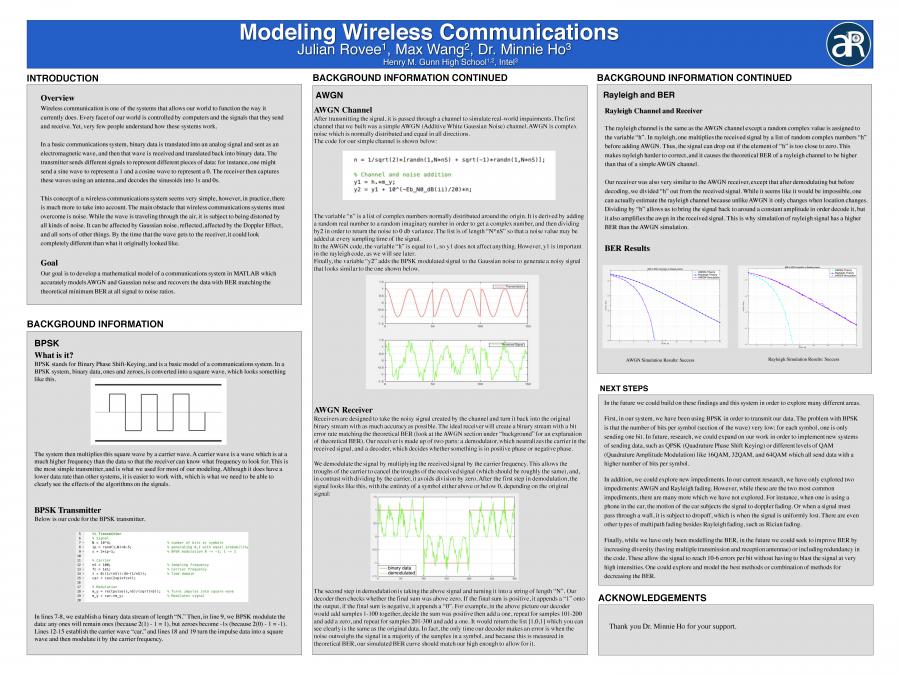Investigating Different Types of Signal Impairments in a 5G Wireless Communications System by Max W. & Julian R.
Presentation
Summary
How does one deal with different types of signal impairments in a 5G wireless communications system? Wireless communications is one of the systems that allows our world to function the way it currently does. Every facet of our world is controlled by computers and the signals that they send and receive. Yet very few people understand how these systems work. In a basic communications system, binary data is translated into an analog signal and sent as an electromagnetic wave, and then that wave is received and translated back into binary data. The transmitter sends different signals to represent different pieces of data: for instance, one might send a sine wave to represent a 1 and a cosine wave to represent a 0. If the transmitter sends out one these signals per second, then the data rate, or the speed with which this information that can be sent and received, is 1 bps....in order to increase the data rate, one must either increase the frequency of the symbols or increase the amount of information per symbol. While basic cellular communication can be achieved using simple, low-speed transmissions, more data-intensive activities, such as video streaming and online gaming, require higher speeds. Each subsequent generation of cellular network attempts to increase one of these elements. In particular, 5G systems seek to increase the symbol frequency by increasing the frequency of the carrier wave. This allows more full wave periods to be included per symbol, and this allows the receiver to more precisely model the wave. However, while high-frequency waves allow more precise estimations of the data, they are less resilient and more harshly affected by background noise. The basic challenge of 5G cellular networks is to be able to recover these high-frequency waves despite all different kinds of impairments.... To mathematically model our communications system, we will be using a program called MatLab. MatLab allows us to program and reprogram each part of the system: the transmitter, the channel, and the receiver. The transmitter is typically very simple: it merely prints a string of random data points. The channel attempts to model different types of impairments that can occur in the real world. We will focus on four main types of impairments: random noise, reflections, interference, fading, and doppler. Finally, the receiver attempts to recover the original data from the signal it receives. This part of the design takes the most creativity, but we can build on the work of researchers in the past who have already designed adjustments for certain types of impairments. Finally, we must compare the received data to the original data string in order to find our percent error. The goal of this project is to create a system that deals with multiple types of impairments and has an error rate of 1 error per million bits.

